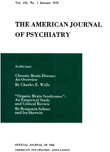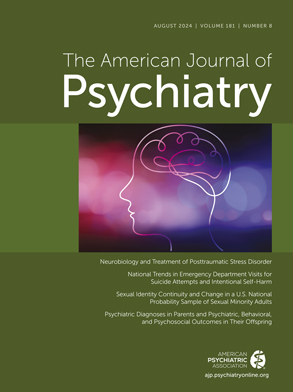Abstract
This paper presents a summary of our experiences with a large group of cases of traumatic war neurosis during the 5-year period since the end of the war. We have made certain observations that have been hitherto unreported and that we feel have both theoretical and practical therapeutic significance.
1. Traumatic war neuroses occur in non-combatant military personnel located in a combat area with a relatively high degree of frequency. This group is vulnerable because they are exposed to traumata without the possibility of effective motor discharge of the emotions thereby engendered.
2. Guilt about killing or assailing defenseless enemy personnel, either military or civilian, is an important factor in the precipitation of a traumatic war neurosis. In such instances the superimposed military code (superego) yields to the earlier and stronger civilian prohibition against violence toward others.
3. Traumatic war neurosis can and does occur in conjunction with physical injury. Separation from the unit because of physical injury removes the influence of group morale, which serves as a deterrent to neurotic breakdown.
4. Physical injury or medical or surgical disorder that leads to enforced immobilization seems to encourage the development of the traumatic war neurosis by depriving the individual of the possibility of discharge of tension through motor activity.
5. Speech disturbances such as stammering can occur in cases of traumatic war neurosis without any evidence of this disorder having existed previously.
6. An overidealization of the pretraumatic history occurs in cases of traumatic war neurosis. This is viewed as a defensive maneuver of the ego in its effort to find some stable point in a world that has become overwhelming and threatening to the patient.
7. The monotonous repetition of the traumatic war experiences and combat dreams in cases of traumatic war neurosis is caused by the transformation of the world into a threatening place. The patient reacts to civilian life as if he were still in combat.
8. Changes in the details of the repetitive traumatic experiences and the combat dreams are significant indicators of the points at which the traumatic experiences are linked with pretraumatic experiences.
9. In our experience, the use of intravenous narcosis or hypnosis has not been particularly helpful in cases of chronic traumatic war neurosis. This is due to the need for developing a firm relationship with the patient because of his feeling regarding the threatening nature of his environment and the people therein.
10. We have differentiated 2 character groups among our cases of traumatic war neurosis, according to their pretraumatic adjustment. We have characterized them as alloplastic and autoplastic, or outgoing and inhibited. In the alloplastic, therapy is usually relatively short and consists essentially of relating combat experiences to present feelings and attitudes. In the autoplastic, a further step can be taken beyond this in that the traumatic experiences are related not merely to their present feelings and attitudes but also to the pretraumatic experiences. We feel that this differentiation is important particularly from a practical therapeutic point of view.

